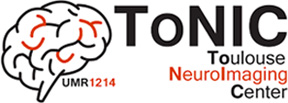Recherche translationnelle en santé,
technologie pour la santé et recherche clinique

- > 12- Kinematic parameters obtained with the ArmeoSpring for upper-limb assessment after stroke: a reliability and learning effect study for guiding parameter use.J Neuroeng Rehabil. 2020 Sep 29;17(1):130. doi: 10.1186/s12984-020-00759-2.
Brihmat N, Loubinoux I, Castel-Lacanal E, Marque P, Gasq D.
<a
<a
<a
See the publication
Publications rédigées ou co-rédigées
Research topics
My research is focused on the evaluation and study of alterations in upper limb movements in brain injured subjects, and more specifically on the problem of spastic co-contractions. This is a translational research topic in the field of integrative neurophysiology of movement.A first fundamental axis focuses on the neuromuscular and kinematic correlates of spastic co-contractions. A second, more clinical axis focuses on the clinimetric and psychometric characteristics of the tools for evaluating sensorimotor functions in brain injured subjects.
The study of the mechanisms altering the movements of the upper limb in brain injured subjects during movement is original due to technical constraints, but it improves fundamental pathophysiological knowledge and opens up clinical perspectives. The better understanding of the impact of spastic co-contractions on movement alterations opens up a major field of application in the field of functional support through a prehension neuroprosthesis. Finally, a functional and ecological assessment of movement in daily life situations requires the development of on-board tools.
In terms of perspectives, 3 axes emerge: 1) studying the anatomo-functional cerebral correlates of spastic co-contractions evaluated during movement; 2) develop tools for evaluating the factual performance of the upper limb that can be used in ecological situations of everyday life; and 3) develop a closed-loop controlled prehension neuroprosthesis whose piloting efficiency is closely linked to the problem of spastic co-contraction.
All of my research calls for a multimodal evaluation of movement (EMG, EEG, kinematics, MRI) at the intersection of neuroscience and biomechanics. The data are collected in clinical studies including hemiparetic subjects after stroke and control subjects.
Current projects
– Clinical characterization and anatomo-functional neuronal correlates of spastic co-contractions of the upper limb after a stroke (PhD student: Camille CORMIER).
– Design and modeling of intuitive control modalities for an on-board prehension neuroprosthesis for functional replacement after a stroke (PhD student: Ronan LE GUILLOU).
– Neuro-biomechanical study of the central mechanisms of healthy and impaired voluntary motricity control: adaptations to botulinum toxin injections in post-stroke subjects (PhD student: Célia DELCAMP).

